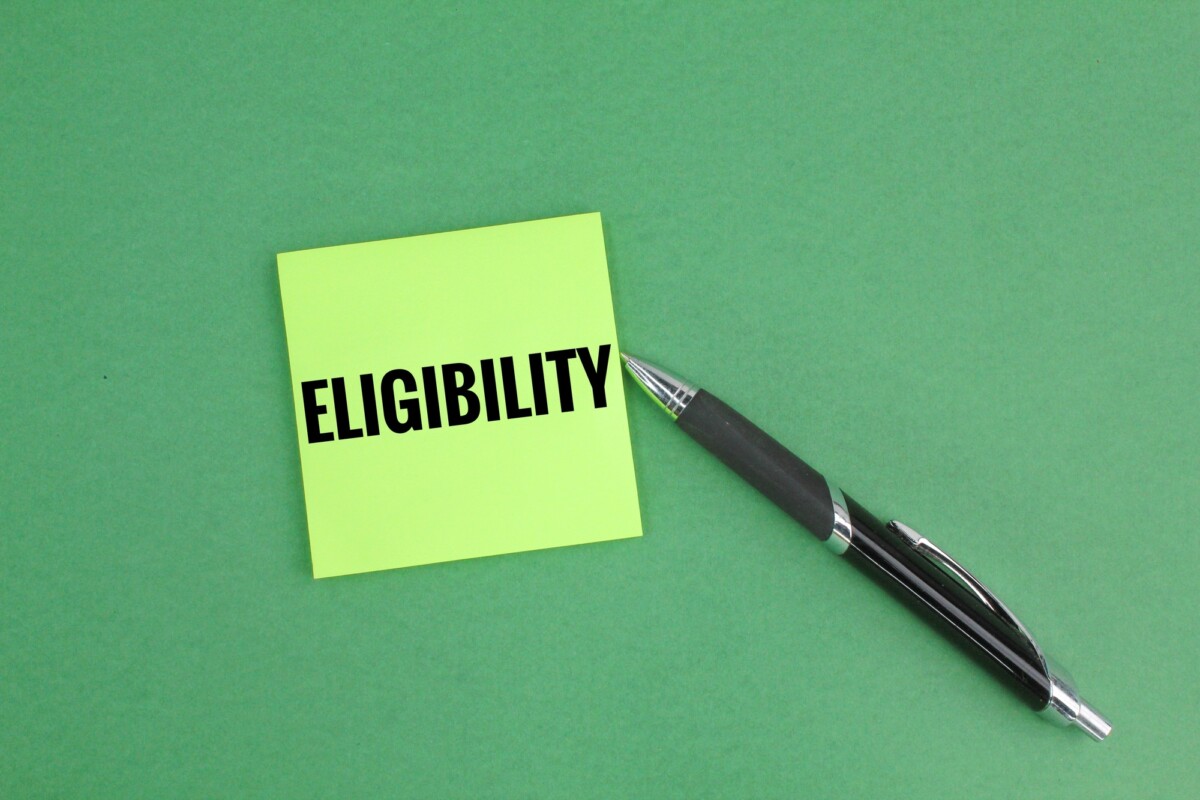Understanding QMB Eligibility for Medicare Assistance
Understanding QMB eligibility is crucial for individuals who may need assistance with their healthcare costs. The Qualified Medicare Beneficiary (QMB) program helps low-income individuals by covering premiums, deductibles, and coinsurance for Medicare services. This support can significantly alleviate the financial burden on those who qualify, ensuring they receive necessary medical care without overwhelming expenses.
What is QMB Eligibility?
QMB eligibility is determined by specific income and asset limits set by the federal government. To qualify, individuals must meet the following criteria:
- Income Limits: Generally, your monthly income must be at or below 100% of the federal poverty level (FPL). For 2023, this is approximately $1,215 for an individual and $1,640 for a couple.
- Asset Limits: Your countable assets must not exceed $8,400 for an individual or $12,600 for a couple. This includes savings, stocks, and bonds, but not your home or car.
- Medicare Enrollment: You must be enrolled in Medicare Part A to qualify for QMB benefits. If you haven’t enrolled yet, it’s essential to do so to access these financial aids.
Why is QMB Eligibility Important?
Understanding QMB eligibility is vital for those who may struggle with healthcare costs. Here are some key points to consider:
- Financial Relief: QMB can cover costs that Medicare does not, such as premiums and out-of-pocket expenses, making healthcare more affordable.
- Access to Care: With QMB assistance, beneficiaries are more likely to seek necessary medical care, leading to better health outcomes.
- Increased Awareness: Many eligible individuals are unaware of their QMB eligibility, which can prevent them from receiving essential support. Raising awareness about this program can help more people access the benefits they deserve.
Income Requirements for QMB
Understanding QMB eligibility is crucial for individuals who may struggle with healthcare costs. The Qualified Medicare Beneficiary (QMB) program is designed to assist low-income individuals by covering their Medicare premiums, deductibles, and coinsurance. This support can significantly ease the financial burden on those who qualify, allowing them to access necessary medical services without the stress of overwhelming costs.
To qualify for QMB, applicants must meet specific income requirements. These thresholds are set annually and can vary based on household size. It’s essential to stay updated on these figures to determine eligibility accurately.
Federal Poverty Level (FPL)
- The income limits for QMB are typically tied to the Federal Poverty Level (FPL).
- For 2023, the income limit for an individual is approximately 100% of the FPL, which is about $1,133 per month.
- For a couple, the limit is around $1,526 per month.
These figures are crucial because they help determine whether an individual or couple qualifies for QMB eligibility. If your income is at or below these levels, you may be eligible for assistance with your Medicare costs.
Asset Limits
- In addition to income, there are also asset limits to consider.
- For 2023, the asset limit for an individual is $7,970, while for a couple, it is $11,960.
Assets include cash, bank accounts, stocks, and other resources. However, certain assets, like your primary home and vehicle, are typically excluded from this calculation. Understanding these limits can help you assess your eligibility for the QMB program effectively.
State Variations
- It’s important to note that some states may have different income and asset limits for QMB eligibility.
- Additionally, states may offer additional programs or benefits that can further assist low-income individuals.
Checking with your local Medicaid office can provide you with the most accurate and relevant information regarding your eligibility and the specific requirements in your state.
Asset Limits for QMB Eligibility
When it comes to healthcare, understanding the various programs available can be a bit overwhelming. One such program is the Qualified Medicare Beneficiary (QMB) program, which plays a crucial role in helping low-income individuals access necessary medical services. QMB eligibility is significant because it ensures that those who qualify can receive assistance with their Medicare premiums, deductibles, and coinsurance, making healthcare more affordable for vulnerable populations.
To qualify for the QMB program, applicants must meet specific asset limits. These limits are designed to ensure that assistance is directed toward those who truly need it. Understanding these asset limits is essential for anyone considering applying for QMB benefits.
What Are the Asset Limits?
The asset limits for QMB eligibility can vary slightly depending on the state, but generally, the following guidelines apply:
- Individual Limit: $8,400
- Couple Limit: $12,600
These figures represent the total value of countable assets, which can include cash, stocks, bonds, and other resources. However, certain assets are excluded from this calculation, such as:
- Your primary home
- One vehicle
- Personal belongings and household items
Why Are Asset Limits Important?
The asset limits are crucial because they help determine who qualifies for the QMB program. By setting these limits, the program aims to assist those with limited financial resources. Here are a few key points to consider:
- Encourages Savings: The asset limits encourage individuals to save money while still being eligible for assistance.
- Protects Vulnerable Populations: By focusing on low-income individuals, the program ensures that those who need help the most receive it.
- Promotes Financial Stability: Understanding these limits can help applicants plan their finances better, ensuring they remain eligible for QMB benefits while working towards greater financial independence. In conclusion, knowing the asset limits for QMB eligibility is vital for anyone looking to benefit from this program. By understanding what counts as an asset and the limits set forth, individuals can make informed decisions about their financial health and healthcare access. If you think you might qualify, it’s worth exploring your options further!
Application Process for QMB
The Qualified Medicare Beneficiary (QMB) program is a crucial resource for individuals who struggle with healthcare costs. Understanding qmb eligibility is essential for those who may qualify, as it can significantly reduce out-of-pocket expenses for Medicare beneficiaries. This program helps cover premiums, deductibles, and coinsurance, making healthcare more accessible for low-income individuals.
Applying for the QMB program can seem daunting, but breaking it down into manageable steps can simplify the process. Here’s what you need to know to get started.
Eligibility Requirements
To apply for QMB, you must meet specific eligibility criteria, including:
- Income Limits: Your income must be at or below 100% of the federal poverty level. For 2023, this is approximately $1,215 per month for an individual and $1,640 for a couple.
- Resource Limits: Your countable resources should not exceed $8,400 for an individual or $12,600 for a couple. This includes savings, stocks, and bonds, but not your home or car.
These criteria ensure that the program assists those who need it most, providing vital support to low-income Medicare beneficiaries.
How to Apply
The application process for QMB can be done through several channels:
- Online Application: You can apply through your state’s Medicaid website. Many states offer an online portal for ease of access.
- In-Person Application: Visit your local Medicaid office for assistance. Staff can guide you through the application process and answer any questions.
- Phone Application: Call your state’s Medicaid office to apply over the phone. This option is great for those who prefer direct communication.
Regardless of the method you choose, be prepared to provide documentation regarding your income and resources, as this information is crucial for determining your qmb eligibility.
Important Considerations
- Renewal Process: Once you are approved for QMB, you will need to renew your eligibility periodically. This usually occurs annually, and you will receive a notice when it’s time to renew.
- Impact on Other Benefits: Being enrolled in QMB may also qualify you for additional assistance programs, such as Extra Help for prescription drug costs.
Understanding the application process for QMB is vital for those who may benefit from this program. By knowing the eligibility requirements and how to apply, you can take the necessary steps to secure financial assistance for your healthcare needs.
Benefits of QMB Program
The Qualified Medicare Beneficiary (QMB) program is a vital resource for individuals who struggle with healthcare costs. Understanding qmb eligibility is crucial, as it opens the door to significant financial assistance for those who qualify. This program helps low-income individuals by covering their Medicare premiums, deductibles, and co-payments, ensuring that healthcare remains accessible to everyone, regardless of their financial situation.
Financial Relief
- The QMB program covers Medicare Part A and Part B premiums, which can be a substantial financial burden for many seniors.
- It also pays for deductibles and co-insurance, meaning that beneficiaries can access necessary medical services without the fear of overwhelming costs.
- According to the Centers for Medicare & Medicaid Services, nearly 7 million people benefit from the QMB program, highlighting its importance in the healthcare landscape. The financial relief provided by the QMB program is a game-changer for many. For instance, without this assistance, a senior could face thousands of dollars in out-of-pocket expenses each year. With the QMB program, those costs are significantly reduced, allowing individuals to focus on their health rather than their finances.
Access to Healthcare Services
- QMB eligibility ensures that beneficiaries can access a wide range of healthcare services without the burden of high costs.
- This includes hospital visits, doctor appointments, and necessary medical treatments, which are crucial for maintaining health and well-being.
- Studies show that individuals with access to healthcare services are more likely to manage chronic conditions effectively and lead healthier lives. Access to healthcare services is essential for everyone, especially for those with chronic illnesses. The QMB program not only alleviates financial stress but also encourages individuals to seek medical attention when needed, ultimately leading to better health outcomes.
Peace of Mind
- Knowing that Medicare costs are covered provides peace of mind for beneficiaries and their families.
- This assurance allows individuals to focus on their health rather than worrying about how to pay for medical expenses.
- The QMB program also reduces the likelihood of medical debt, which can be a significant source of stress for many seniors. In conclusion, the benefits of the QMB program extend far beyond financial assistance. By understanding qmb eligibility, individuals can unlock a range of advantages that promote health, well-being, and peace of mind. This program is a lifeline for many, ensuring that healthcare remains a right, not a privilege.
Common Misconceptions about QMB Eligibility
Understanding QMB eligibility is crucial for many individuals who may be struggling with healthcare costs. The Qualified Medicare Beneficiary (QMB) program helps low-income seniors and individuals with disabilities by covering their Medicare premiums, deductibles, and coinsurance. However, there are several misconceptions surrounding who qualifies for this assistance, which can lead to confusion and missed opportunities for those in need.
Misconception 1: Only Seniors Can Qualify for QMB
Many people believe that only seniors aged 65 and older can qualify for QMB eligibility. However, this is not the case. Individuals under 65 who receive Social Security Disability Insurance (SSDI) may also be eligible.
- Fact: According to the Centers for Medicare & Medicaid Services (CMS), anyone who meets the income and resource limits can qualify, regardless of age.
- Statistics: In 2021, over 1.5 million individuals under 65 were enrolled in QMB programs across the United States.
Misconception 2: You Must Be Completely Broke to Qualify
Another common myth is that applicants must have no income or assets to qualify for QMB eligibility. This is misleading, as there are specific income and resource limits that allow for some financial flexibility.
- Fact: For 2023, the income limit for QMB eligibility is set at 100% of the Federal Poverty Level (FPL), which is approximately $1,215 per month for an individual.
- Resource Limits: Individuals can have up to $8,400 in countable resources, while couples can have up to $12,600, which includes savings, stocks, and bonds.
Misconception 3: QMB Only Covers Hospital Costs
Many believe that QMB eligibility only assists with hospital-related expenses. In reality, QMB covers a wide range of Medicare costs.
- Coverage Includes:
- Medicare Part A premiums
- Medicare Part B premiums
- Deductibles and coinsurance for both Part A and Part B
- Comprehensive Support: This means that QMB beneficiaries can receive significant financial support for various healthcare services, not just hospital stays.
Misconception 4: You Can’t Have Other Insurance
Some individuals think that having other health insurance disqualifies them from QMB eligibility. This is not entirely true.
- Fact: You can have other forms of insurance, such as Medicaid or employer-sponsored plans, and still qualify for QMB.
- Coordination of Benefits: In many cases, QMB can work alongside other insurance to reduce out-of-pocket costs even further. By dispelling these common misconceptions about QMB eligibility, we can help more individuals access the healthcare support they need. Understanding the true requirements and benefits of the QMB program is essential for those who may qualify.
Frequently Asked Questions About Medicare QMB and Part B Premium Reduction
1. How do you qualify for Medicare QMB?
The Qualified Medicare Beneficiary (QMB) Program is a Medicaid assistance program that helps low-income Medicare beneficiaries pay for premiums, deductibles, and co-pays. To qualify, you must meet these requirements:
- Be enrolled in Medicare Part A and Part B.
- Meet income and resource limits (varies by state, but generally around 100% of the Federal Poverty Level).
- Have limited assets, including savings, retirement accounts, and property (excluding your primary home and one vehicle).
- Apply through your state’s Medicaid office to determine eligibility.
2. What is the difference between QMB and Medicaid?
The QMB Program is a Medicare Savings Program (MSP) that helps eligible individuals pay for Medicare-related costs. In contrast, Medicaid provides comprehensive healthcare coverage for low-income individuals and families, including services Medicare may not cover, such as long-term care and personal care assistance. Key differences include:
- QMB helps pay Medicare Part A & B costs, including premiums, deductibles, and co-pays.
- Medicaid provides broader healthcare coverage beyond Medicare, including dental, vision, and long-term care (depending on the state).
- Some people qualify for both QMB and Medicaid, meaning Medicaid acts as secondary insurance and covers costs Medicare does not.
3. Can a Medicare provider refuse a QMB patient?
No, Medicare providers cannot bill or refuse service to QMB patients due to their QMB status. Under federal law:
- Providers must accept QMB as full payment and cannot charge deductibles, co-pays, or balance bills.
- Even if a provider does not accept Medicaid, they must still accept QMB patients without billing them for Medicare-covered services.
- If a provider incorrectly bills a QMB patient, the patient should report the issue to their state Medicaid office or 1-800-MEDICARE.
4. Who is eligible for Part B premium reduction?
The Medicare Part B premium reduction is available to individuals who qualify for Medicare Savings Programs (MSPs) or specific Medicare Advantage plans. You may qualify if:
- You are eligible for Medicaid or a Medicare Savings Program like QMB, SLMB, or QI.
- You are enrolled in a Medicare Advantage plan that offers a Part B premium giveback benefit (sometimes called a “Part B giveback” or “Part B rebate”).
- You meet specific income and resource limits set by your state’s Medicaid office.
Medicare savings are just a step away! Click Newmedicare.com or call 📞 (833) 203-6742 to get your free quote!





